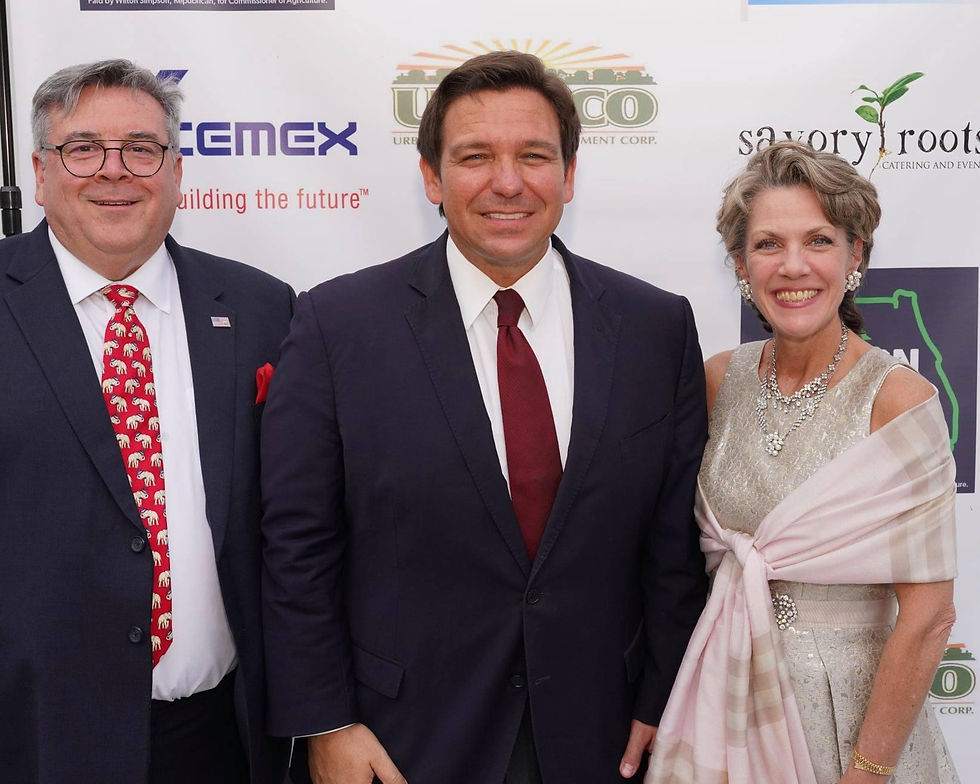High School Financial Literacy Formulas Lesson Plan
- The Chairman

- Aug 24
- 3 min read

Topic: Financial Formulas & Problem-Solving for GMetrix Domain 4 Grade Level: 9–12 Duration: 90 minutes Subject: Financial Literacy / Business Math
Lesson Objectives
By the end of this lesson, students will be able to:
Understand and apply key financial formulas.
Solve real-world financial literacy problems step by step.
Analyze results and explain financial impacts.
Build confidence in using formulas for business and personal finance decisions.
Florida Sunshine State Standards Alignment
SS.912.FL.1.1 – Explain how personal financial decisions are influenced by incentives, institutions, and individual choice.
SS.912.FL.2.3 – Develop a spending and saving plan that includes financial goals.
SS.912.FL.3.2 – Analyze costs, benefits, and trade-offs in financial decision-making.
MA.912.A-SSE.1.1 – Interpret expressions that represent a quantity in terms of its context.
Financial Formulas, Word Problems, and Step-by-Step Solutions
1. Selling Price Formula
Formula:
Selling Price=(Cost×Desired Profit Margin)+Cost\text{Selling Price} = (\text{Cost} \times \text{Desired Profit Margin}) + \text{Cost}
Word Problem: A store buys a pair of sneakers for $50 and wants a 40% profit margin. What should be the selling price?
Solution:
Cost = $50
Desired Profit Margin = 40% = 0.40
Selling Price = ($50 × 0.40) + $50
Selling Price = $20 + $50
Answer: $70
2. Equity Formula
Formula:
Equity=Assets−Liabilities\text{Equity} = \text{Assets} - \text{Liabilities}
Word Problem: Alex owns a house worth $350,000 but still owes $120,000 on his mortgage. What is his equity?
Solution:
Assets = $350,000
Liabilities = $120,000
Equity = $350,000 − $120,000
Answer: $230,000
3. Gross Profit Formula
Formula:
Gross Profit=Income−Cost of Goods Sold\text{Gross Profit} = \text{Income} - \text{Cost of Goods Sold}
Word Problem: A bakery makes $12,000 in sales for the month. The cost of ingredients and supplies totals $4,500. What is the gross profit?
Solution:
Income = $12,000
COGS = $4,500
Gross Profit = $12,000 − $4,500
Answer: $7,500
4. Net Income Formula
Formula:
Net Income=Income−Cost of Goods Sold−Expenses\text{Net Income} = \text{Income} - \text{Cost of Goods Sold} - \text{Expenses}
Word Problem: A landscaping company earns $20,000 this month, with $7,000 in equipment/material costs and $5,000 in expenses. What is the net income?
Solution:
Income = $20,000
COGS = $7,000
Expenses = $5,000
Net Income = $20,000 − $7,000 − $5,000
Answer: $8,000
5. Income Tax Expense Formula
Formula:
Income Tax Expense=Gross Profit×Tax Rate\text{Income Tax Expense} = \text{Gross Profit} \times \text{Tax Rate}
Word Problem: If a business has a gross profit of $50,000 and a tax rate of 25%, how much will it owe in taxes?
Solution:
Gross Profit = $50,000
Tax Rate = 25% = 0.25
Tax Expense = $50,000 × 0.25
Answer: $12,500
6. Break-Even Point Formula
Formula:
Break-Even Point=Total CostSelling Price\text{Break-Even Point} = \frac{\text{Total Cost}}{\text{Selling Price}}
Word Problem: If it costs a café $5,000 to operate monthly and each coffee sells for $5, how many cups must they sell to break even?
Solution:
Total Cost = $5,000
Selling Price = $5
Break-Even = $5,000 ÷ $5
Answer: 1,000 cups
7. Ending Cash Balance Formula
Formula:
Ending Cash Balance=Total Cash−Total Costs\text{Ending Cash Balance} = \text{Total Cash} - \text{Total Costs}
Word Problem: A company starts the month with $18,000 in cash and spends $12,500 on expenses. What’s the ending cash balance?
Solution:
Total Cash = $18,000
Total Costs = $12,500
Ending Cash = $18,000 − $12,500
Answer: $5,500
8. Burn Rate Formula
Formula:
Burn Rate=Month Starting Balance−Month Ending Balance\text{Burn Rate} = \text{Month Starting Balance} - \text{Month Ending Balance}
Word Problem: A startup begins the month with $25,000 and ends with $15,000. What is the burn rate?
Solution:
Starting Balance = $25,000
Ending Balance = $15,000
Burn Rate = $25,000 − $15,000
Answer: $10,000
9. Run Rate Formula
Formula:
Run Rate=Current Monthly Revenue×12\text{Run Rate} = \text{Current Monthly Revenue} \times 12
Word Problem: If a clothing store earns $8,500 in one month, what is the projected annual revenue based on its run rate?
Solution:
Monthly Revenue = $8,500
Run Rate = $8,500 × 12
Answer: $102,000
10. Return on Investment (ROI) Formula
Formula:
ROI=(Net ProfitCost of Investment)×100\text{ROI} = \left( \frac{\text{Net Profit}}{\text{Cost of Investment}} \right) \times 100
Word Problem: Sofia invests $5,000 into a business and earns $1,500 in profit. What is her ROI?
Solution:
Net Profit = $1,500
Investment = $5,000
ROI = ($1,500 ÷ $5,000) × 100
ROI = 0.3 × 100
Answer: 30%
Class Activities
Students will solve similar problems in groups.
Create a comparison chart for all formulas.
Present solutions and explain reasoning to the class.



































Comments